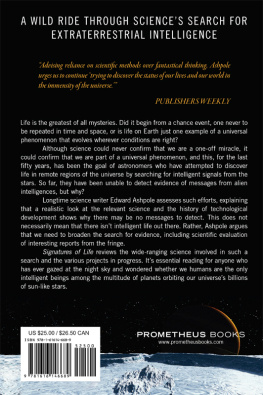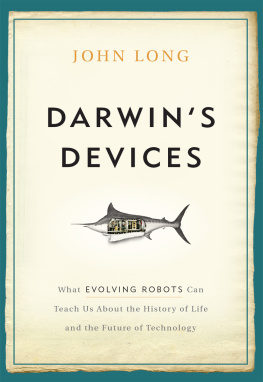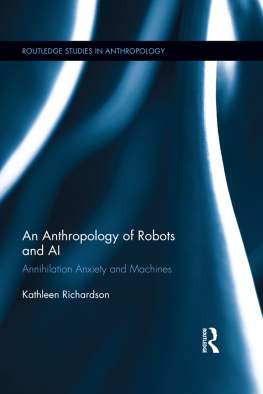
Anyone reading this book will soon see how many different scientific disciplines come together to support the hypothesis that life is a universal phenomenon. So I've needed lots of help and information from lots of clever people over many years. There have been scientists in mainstream science whoknowingly and unknowinglyhave provided relevant data, and those who are openly active in what is currently seen as a fringe area for research. Without these fellow travelers, I would never have written this book, and their respective contributions toward answering the major question about life will be evident in the following pages.

As far as I know, this is the only science-based SETI book that shows why there may be no messages that we can detect from other worlds and why the search for evidence of alien artifacts in the solar system may possibly succeed. To reach this conclusion we only have to consider established science and the way technology advances, which is what I have done. However, there are some good SETI books, different from mine, in which this line of thinking is not pursued, although they do provide excellent introductions to the relevant science. They include
Evolving the Alien, Jack Cohen and Ian Stewart (Ebury Press, 2002).
Just Six Numbers: The Deep Forces That Shape the Universe, Martin Rees. Britain's Astronomer Royal gives a clear and authoritative account of the fundamental constants.
Life on Other Worlds and How to Find It, Stuart Clark (Springer, 2000).
Rare Earth, Peter D. Ward and Donald Brownlee (Springer, 2000).
Sharing the Universe, Seth Shostak (Berkeley Hills Books, 1998).

So what is the status of life in the universe? This book examines this question and looks at what science is telling us about how we might discover the different signatures of life and confirm the major hypothesis in human history: that life and intelligence are universal phenomena. I like to call this the Grand Hypothesis because they don't come any grander.
Life is the greatest mystery in the universe. The chemical systems and molecular structures that keep every living thing alive are almost beyond comprehension in their complexity, yet they work perfectly. So we have to ask how it is that the universal physics and chemistry has not only created the galaxies, stars, and planets of the physical universe but also formed the basic molecular units that evolution has been able to put together to create complex life. Why, at a molecular level, should everything fit together and work? It's not the outward forms of life that most perplex us, though these are amazing in their infinite variety. It is what continually goes on within every living organism. Each one of us is composed of many billions of cells, and each cell is a factory of marvelous complexity, producing everything needed for lifefrom proteins to energy. So we have to ask ourselves if all this is the same or similar on other worldsor substantially different. The range of possibilities must be limited by the universal physics and chemistry and what the process of evolution can do with this. But there's the rub. We don't know what evolution may be able to do. Only the detection of alien life may begin to answer our questions.
Astronomers tell us that the oldest sunlike stars are twice the age of the sun, which means that Earthlike planets orbiting such stars could have supported life a few billion years before its origin on our planet. However, as we know, life can be highly successful without intelligence, and many intelligent species can exist without one having the ability to create technologies. Here we stand alone in this respect, but what about all those other planetary systems? Judging from what has happened here and from the ages of the oldest sunlike stars, technologically intelligent creatures, our counterparts, could sometimes have evolvedand at any time from a few billion years ago. That's an immense period of time during which world civilizations could have developed advanced space programs and explored other planetary systemsat least by robotically controlled craft. So evidence of alien technology could be within the solar system. It seems more likely that intelligent signals are being broadcast from other planetary systems, signals that could be received in our time with our current level of technology. However, evidence of alien broadcasts or alien technology within the solar system would be clear signatures of life and intelligence in the universe.
The fact is that no one knows what the situation is out there or what we might be looking for, but we do have mainstream science to guide us, plus the scientific method to follow. That should be enough for the scientific investigation of ideas and possible relevant data. That is the position taken in this book: that ideas and data must lead to testable hypotheses. Otherwise we are not engaged in science. Testable hypotheses have to be based on what seems possible and on what we already know. A good example of this is the hypothesis that started the scientific discipline of SETI (search for extraterrestrial intelligence). It was published in the science journal Nature in September 1959, and its authors, Philip Morrison and Giuseppe Cocconi, two physics professors, suggested that the frequency of neutral hydrogen at 1420 MHz would be chosen by aliens who wanted to communicate with their neighbors. This speculation was based on the fact that hydrogen is more abundant than all other elements put together, and that it radiates this frequency from most of the celestial objects studied by our radio astronomers. Therefore, astronomers everywhere, in whatever life-form, might spot any artificial signals the frequency carried. It was such a persuasive hypothesis that, for the past fifty years, multimillion-dollar programs of radio astronomy have searched for signs of intelligence on that frequency and others near it. A little later, laser technology was developed to a stage where it was suggested that the aliens might prefer to communicate by very brief but intense flashes from lasers rather than by old-fashioned radio. This brought optical astronomers into SETIand still does.
So both groups of astronomers are looking for evidence on the assumption that, given suitable physical and chemical conditions, life will form on planets and their moons, and that sometimes the equivalent of astronomers will evolve who wish to contact their cosmic neighbors. This might happen in only a tiny proportion of planetary systems, but with a few billion stars like the sun in our galaxy, there could be plenty of planets for the evolution of our fellow travelers in space and time.
However, the searches for radio or laser signals from these other worlds now seem unlikely to succeed for two reasonsand not because our counterparts have never existed. The probable reasons for the failure to find signals to confirm the universal nature of life are the vast expanses of time involved in the history of life on any suitable planet or moon before high intelligence can evolve, and also the speed with which technology develops once such high intelligence exists. These are obstacles to avoid in testing the Grand Hypothesis. And we will see later in this book how this can be doneand is being done. In assessing the justification for testing, we must keep in mind that world civilizations that might be detectable would be far older than ours and supported by technologies beyond our power to imaginebecause we are not yet familiar with the science that would support them. Also, we know from the fossil record and geology that watchful aliens might have detected the Earth as an inhabited planet from its spectral lines at any time during the past 350 million years, and probably for a much longer period. We know that those lines would have been radiating from the Earth during this immense period of timeand they still domaking our planet a target of interest. Consequently, the arrival of evidence such as probes from other worlds during the past 350 million years is not impossible. In fact, it looks a considerably better bet than the arrival of detectable alien broadcasts in our time. Many planetary civilizations could have evolved and become extinct during that period.














